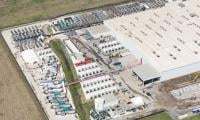CPEC
Capital suggestion
Fact 1: Pakistan’s decision-makers who approve and sign contracts under CPEC have little or no business interests in Pakistan. In other words, Pakistan’s decision-makers who approve and sign contracts under CPEC have most of their business interests outside of Pakistan.
Fact 2: Chinese companies that are undertaking mega-projects in Pakistan maintain a heavy corporate presence in Pakistan. Plus, Chinese companies that are undertaking mega-projects in Pakistan bring in ship-loads of Chinese workers. Plus, Chinese companies that are undertaking mega-projects in Pakistan rarely form genuine partnerships with Pakistani companies. As a consequence, there is little or no transfer of skills. As a consequence, there is little or no transfer of technology.
Fact 3: Developmental loans play a vital role in the development of a country. Whether a ‘developmental loan’ is truly ‘developmental’ or not depends on two things: terms of the loan and the rate of interest. Fact 4: In Pakistan, the terms of Chinese loans and the real rate of interest being charged on them somehow continues to be a ‘state secret’ (the disclosed return on equity in case of coal-fired power plants is between 27.2 percent to 34.49 percent per annum).
Fact 5: International competitive bidding is “the most appropriate method of competitive bidding in public procurement. The process entails the procurement entity to internationally advertise their requirement of goods and services; in an internationally acceptable language. The contract is then awarded to the bidder with the best bids and contract terms.” Fact 6: International competitive bidding “promotes competition between suppliers, resulting in best ‘value for money’ for the purchaser.” Fact 7: Projects under CPEC are awarded without international competitive bidding.
Fact 8: The Government of Pakistan is providing tax breaks and other incentives to Chinese companies undertaking projects in CPEC – with no comparable tax breaks or incentives to Pakistani companies. Fact 9: The demand for ‘Made-in-Pakistan’ goods is going down like a pebble in a clear-water lake.
Fact 10: Pakistan’s textile sector has a 52 percent share in Pakistan’s total exports and employs 40 percent of the total manufacturing labour force.
Pakistan Textile City: In 2009, the Government of Pakistan established an industrial zone at Port Qasim specifically “dedicated to textile processing and related industry”. The federal government had a 40 percent share, Sindh government 16 percent, National Bank of Pakistan 8 percent, Export Processing Zone 4 percent, Saudi Pak Insurance Company, Pak Qatar Investment Company, Pak Kuwait Investment Company each 4 percent and PIDC 1 percent. On August 4, 2017, a parliamentary committee was told that the “government had decided to wind up the Pakistan Textile City”.
Xinjiang Textile Park: The Chinese government inaugurated the Xinjiang Textile Park in the neighbouring province of the China-Pakistan border. The Park now produces more than 10 million meters of cotton cloth and has close to a million spindles. The Chinese government doles out $33 billion in subsidies to cotton farmers of Xinjiang and under the 10-year Textile Development Plan the Xinjiang Textile Park will be the largest textile exporting hub in the region. Yes, Pakistan’s textile industry is scared to death. To be certain, CPEC is neither good nor bad; it is what we can extract out of it.
One last question: Are the CPEC projects really creating opportunities for Pakistanis?
The writer is a columnist based in Islamabad.
Email: farrukh15@hotmail.com Twitter: @saleemfarrukh
-
 European Space Agency Hit By Cyberattack, Hundreds Of GBs Data Leaked
European Space Agency Hit By Cyberattack, Hundreds Of GBs Data Leaked -
 Elon Musk’s XAI Launches World’s First Gigawatt AI Supercluster To Rival OpenAI And Anthropic
Elon Musk’s XAI Launches World’s First Gigawatt AI Supercluster To Rival OpenAI And Anthropic -
 Google Adds On-device AI Scam Detection To Chrome
Google Adds On-device AI Scam Detection To Chrome -
 First Ocean Robot Launched To Monitor 'Category 5' Hurricanes
First Ocean Robot Launched To Monitor 'Category 5' Hurricanes -
 Gwyneth Paltrow Gets Honest About Filming Intimate Scenes With Timothee Chalamet
Gwyneth Paltrow Gets Honest About Filming Intimate Scenes With Timothee Chalamet -
 Duke's Peace Talks With King Charles, Prince William: 'Ball Is In Harry's Court'
Duke's Peace Talks With King Charles, Prince William: 'Ball Is In Harry's Court' -
 New Research Finds Back Pain May Disrupt Men’s Sleep Quality Later In Life
New Research Finds Back Pain May Disrupt Men’s Sleep Quality Later In Life -
 Jennifer Lopez Still 'very Close' With Ben Affleck's Children, Invites Them To Vegas
Jennifer Lopez Still 'very Close' With Ben Affleck's Children, Invites Them To Vegas -
 Matt Damon Gets Honest About Netflix's Way Of Storytelling
Matt Damon Gets Honest About Netflix's Way Of Storytelling -
 Prince William, Harry Rift Still 'simmering Away'
Prince William, Harry Rift Still 'simmering Away' -
 What's Buzzing Around TikTok's 'PineDrama' App: Everything You Need To Know
What's Buzzing Around TikTok's 'PineDrama' App: Everything You Need To Know -
 Who’s Next After Australia’s Under-16s Social Media Ban?
Who’s Next After Australia’s Under-16s Social Media Ban? -
 Do You Have Depression Or Is It Just Monday Blues? Find Out Where Science Stands
Do You Have Depression Or Is It Just Monday Blues? Find Out Where Science Stands -
 Why Claude Is Gaining Momentum In Revolutionizing The AI Landscape
Why Claude Is Gaining Momentum In Revolutionizing The AI Landscape -
 Elon Musk Unveils Plans To Take Humanity To The Moon And Mars
Elon Musk Unveils Plans To Take Humanity To The Moon And Mars -
 Air Pollution May Play A Role In Prostate Cancer Risk, Experts Warn
Air Pollution May Play A Role In Prostate Cancer Risk, Experts Warn



